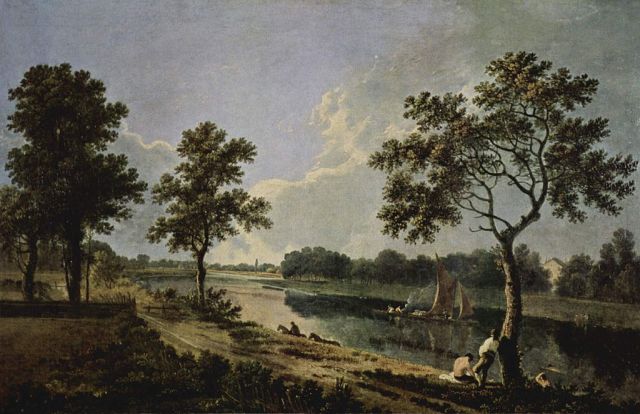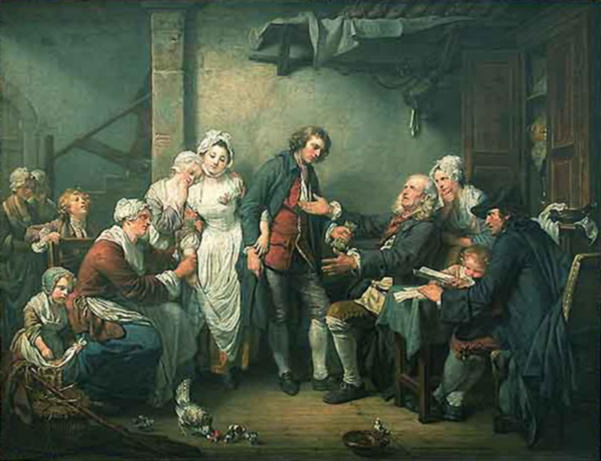Chips Lovell brings Nick to the Jeavons home, where Nick surveys the scene upon entering the drawing room: “Some of the furniture was obviously rather valuable: the rest, gimcrack to a degree. Pictures showed a similar variation of standard, a Richard Wilson and a Greuze (these I noted later) angling among pastels of Moroccan native types.” [ALM 24/21]
Richard Wilson (1714-1782) was a Welsh-born painter, one of the earliest British landscape painters and well-known for his idealized bucolic scenes in the tradition of Claude Lorrain. Wilson became a founding member of the Royal Academy. Pictured here is his view of the Thames at Twickenham from 1762.

Richard Wilson, c. 1762
oil on canvas, 18 X 29 in
The Tate
image in public domain from Wikimedia Commons
We have interspersed a Moroccan pastel of a courtyard in Marrakech, painted contemporary to the setting of ALM, to highlight the eclectic nature of the Jeavon’s collection.

L’accordée de village
Jean-Baptise Greuze, 1761
oil on canvas, 36 X 42 in
Musee de Louvre
image in public domain from Wikimedia Commons
Jean Baptiste Greuze (1725-1805) was a French painter who aspired to be known for his historical compositions but whose fame was primarily based on masterful “genre scenes,” riveting melodramas of bourgeois domestic life that embody moral lessons. In spite of his vexed relationship with the French Royal Academy regarding the status of such subject matter in the traditional hierarchy of painting subjects, Greuze was immensely popular with a bourgeois audience during his own lifetime. By the time of his death, however, Greuze’s reputation had fallen precipitously, due to the sentimental nature of his domestic scenes, but in most recent times a renewed esteem for his draughtsmanship and formal mastery have kept his name in currency. We aren’t told which Greuze hung in the Jeavons’s drawing room, but here is his “Village Wedding,” of 1761, now in the Louvre.

Pingback: The School of Paris and The Celtic Twilight | picturesinpowell